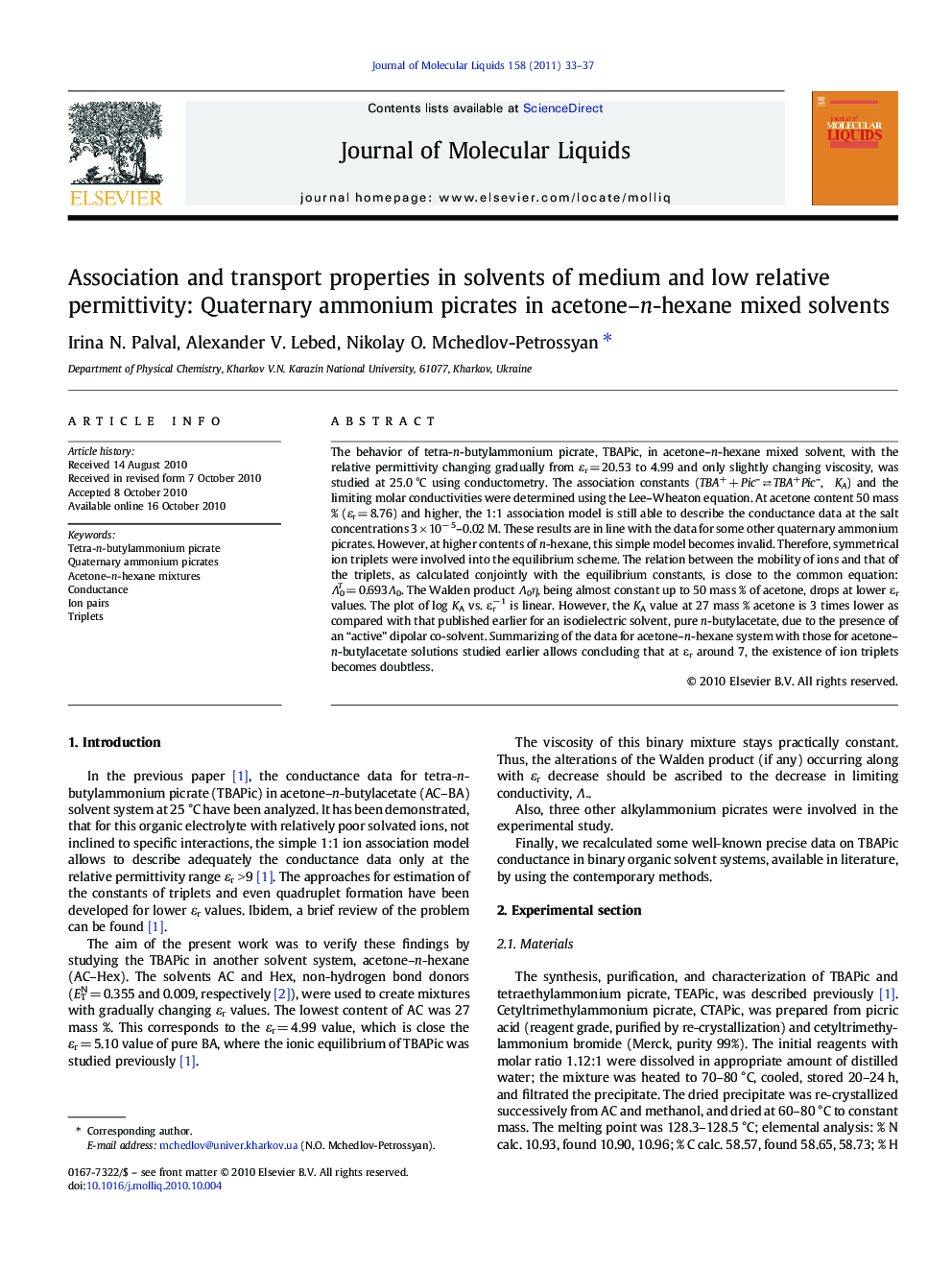| Article ID | Journal | Published Year | Pages | File Type |
|---|---|---|---|---|
| 5412887 | Journal of Molecular Liquids | 2011 | 5 Pages |
Abstract
The behavior of tetra-n-butylammonium picrate, TBAPic, in acetone-n-hexane mixed solvent, with the relative permittivity changing gradually from εr = 20.53 to 4.99 and only slightly changing viscosity, was studied at 25.0 °C using conductometry. The association constants (TBA+ + Pic- â TBA+Pic-, KA) and the limiting molar conductivities were determined using the Lee-Wheaton equation. At acetone content 50 mass % (εr = 8.76) and higher, the 1:1 association model is still able to describe the conductance data at the salt concentrations 3 Ã 10â 5-0.02 M. These results are in line with the data for some other quaternary ammonium picrates. However, at higher contents of n-hexane, this simple model becomes invalid. Therefore, symmetrical ion triplets were involved into the equilibrium scheme. The relation between the mobility of ions and that of the triplets, as calculated conjointly with the equilibrium constants, is close to the common equation: Î0T = 0.693Î0. The Walden product Î0η, being almost constant up to 50 mass % of acetone, drops at lower εr values. The plot of log KA vs. εrâ 1 is linear. However, the KA value at 27 mass % acetone is 3 times lower as compared with that published earlier for an isodielectric solvent, pure n-butylacetate, due to the presence of an “active” dipolar co-solvent. Summarizing of the data for acetone-n-hexane system with those for acetone-n-butylacetate solutions studied earlier allows concluding that at εr around 7, the existence of ion triplets becomes doubtless.
Keywords
Related Topics
Physical Sciences and Engineering
Chemistry
Physical and Theoretical Chemistry
Authors
Irina N. Palval, Alexander V. Lebed, Nikolay O. Mchedlov-Petrossyan,
